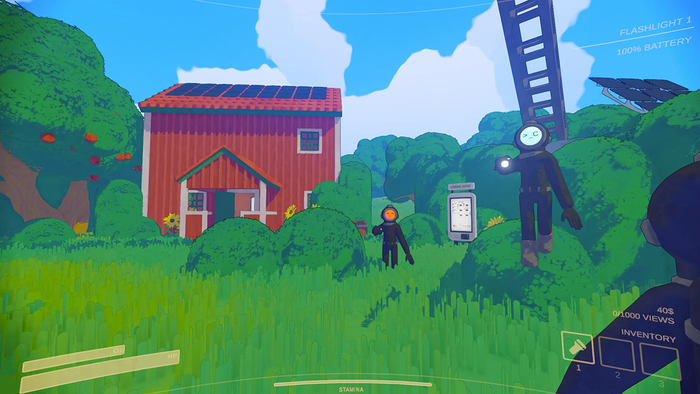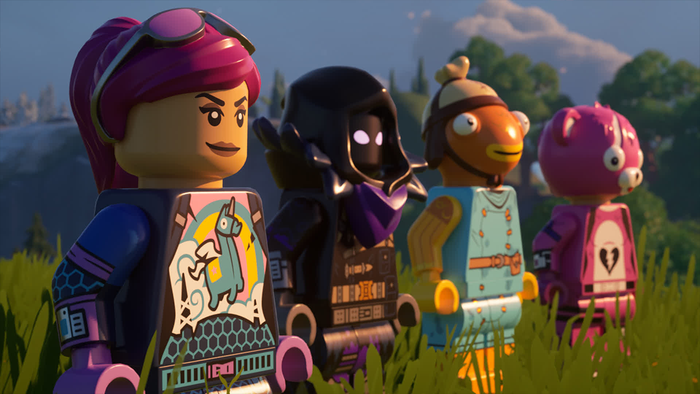Japanese developer From Software (Armored Core) showcased visually impressive Xbox 360-exclusive action title Ninja Blade at Tokyo Game Show -- and Gamasutra talks to Kazuhiro Hamatani about its use of "quicktime events" and varied cinematic
November 25, 2008

Author: by Christian Nutt, Staff
Independent Japanese developer From Software (Armored Core) has been surprisingly supportive of Microsoft's Xbox 360, delivering exclusives (and timed exclusives) like Chromehounds, Enchanted Arms, and Tenchu Z since soon after the system's launch. Its visually impressive upcoming title Ninja Blade, set to be published by Microsoft Game Studios in early 2009, is characterized by the studio as a "cinematic action game". By shuffling together a variety of different gameplay styles within missions, the team hopes to create an unceasingly action-packed experience that lives up to its silver screen counterparts. Gamasutra caught up with From Software main planner Kazuhiro Hamatani, who spoke about the philosophical core of the game's design, the importance of pacing in gameplay, and why it can be important to restrain in-game storytelling. How did you arrive at the different modes, with the cinematic button-pressing "quicktime event" mode, the direct combat mode, and the hybrid of the two? Kazuhiro Hamatani: What we wanted to create here is a cinematic action game. It's not just one game system. It's difficult to express a situation like a Hollywood action movie with just one game system, so we wanted to create a game by focusing on the situations. In that case, it wasn't really the game system [that was conceived] first. The situations came first -- there were certain situations we wanted to express. We tried to think of how we could create such situations, so that users would be able to play them in the game. This was more like a situation-driven development. When it comes to creating the game in terms of pacing, how did the team arrive at a good balance between the three different modes? KH: Over time, you will know more about this game, but there are some other situations included in this game as well. Basically, there are cutscenes with button entries and evasive combat scenes, as well as scenes with combat on the surface of building walls. We included them in one set, connected in sequences that comprise missions. For each different mission, we've tried to have a clear set of characteristics by including a certain type of situation. We aimed for a cinematic action game, so in one mission, we try to have a beginning, the excitement, and then something like an ending or conclusion to make it one small drama -- something like a movie. Did you study the classic act structure, as used in films for example, and then apply that to the design pacing? KH: Films and games are different from each other, but in Hollywood action movies, there is one exciting scene once every three minutes or so, so we tried to refer to such things as a philosophy, something like an ideal. Rather than referring to the movie structure, we tried to refer to the philosophy behind movies, because we don't have dramatic scenes in the game. How do you tie that pacing to the different types of gameplay sequences? KH: In action games, there are elements I like, but I am unsatisfied in some areas as well. In some cases, the users tend to get bored or lazy, and they become too calm or quiet -- in a negative sense. That doesn't mean that we have to create many scenes, like in varied action movies; it doesn't mean that we have to increase their frequency. But what's important is the user to be able to feel excitement, rather than being tired or bored by the game. It's not about how many minutes you have to switch to the other situation. That's not the question. But we want to feel some excitement, rather than being bored or getting tired. That's what I get behind in switching between different situations. I get the sense there aren't a lot of cutscenes -- it's mainly unbroken gameplay? KH: That's right. The dramatic scenes are used in very limited circumstances. Maybe at the opening and the ending, and also when scenarios change, we include such scenes, but not elsewhere very often. Also, the cutscenes with button entries account for just ten percent. There's been a lot of talk, especially in the U.S., about trying to limit the non-interactive parts of games, and also to create games that tell stories interactively, rather than sit the player in front of a story. Have you given this any thought? KH: Yes. That's very important. Once the player becomes an observer or outsider, he or she will lose the sense of unity with the main character, so we tried to be careful in that respect. That's an interesting concept, the unity with the main character. I think there's more than one way to look at it. I think that often, Japanese games create a character like a movie character that you can enjoy their story, but you don't feel like you're really participating. Often the goal in American games is to create a character that the player aspires to be like, and thus participates in their actions directly. I was wondering if you could talk about your philosophy there, please. KH: There are pros and cons to each of the philosophies you have just mentioned, but this is a game, so it's important to have characters that players can empathize with in the game. We do have characters with certain features, and something special or a uniqueness about the characters, but there should be some room for the players to project themselves onto such characters. In that sense, we don't disclose too many details to the users. The main character is wearing a mask. That's another aspect. It's important to have special characteristics of the characters, but we also want the players to be able to feel some emotions about the characters as well.
You May Also Like






